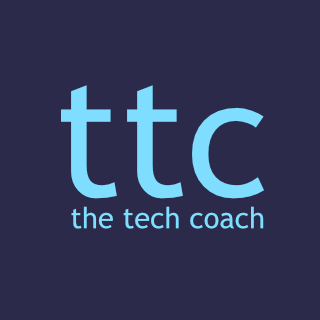A Screen to Hide From or Platform to Project From?
I try to be the same offline as online, in as much as I can. However, as has been addressed perhaps in thousands of comments, blogs, vlogs, articles, and books – assuming a different online persona gives us confidence – although some would see this as a screen to hide behind; I see it in a more positive light – a platform to project from. Please read on to see how to make online connections.
Lurker or… Observer/Learner/Reader
When I picture a lurker, I imagine a person skulking in dark corners, sneaking around to see what opportunities might arise for the least amount of effort. I think it is perfectly fine to be a lurker as long as we call it something else, like observer, learner, or reader; and with this name change comes a perception difference as well.
I have been an observer for quite some time, in most cases. Part of this process involves me learning from the various online communities available today. I do sometimes add to the conversation but only if I feel it is needed, or if I believe it can drive the conversation forwards. I am wary about contributing all the time, as through my observations from reading various blog post comments, there are an awful lot of experts out there giving their opinion; regardless of whether or not they add to or diminish the discussion. Also, sometimes I find myself wanting to add what I perceive to be a constructive comment, only to have this last-minute fear of thinking that my question has already been answered back in 2012, in a related post.
Call me what you like; I may be a bit lazy when contributing online but I always bring my online learning (#onlinearning) into the classroom, and for me, that’s what is most important. However, after reading through the importance of contributing, and potentially helping to shape the discussion of topics that our students need to succeed in school and beyond, I will make a real effort to become a conscientious contributor and connector.
Content With Your Connections?
I believe that the internet is both a sprawling mass of content and connections. The user is only beginning to understand how to connect the dots, but the collectors (e.g. Facebook, Google, AWS), are only too aware of how this works and are doing so to meet their hunger for money and power.
To demonstrate my understanding of this question, and the question of how to make online connections, I will address two key areas that I believe would be most relevant to our students – Gaming and Social Media. Addressing these points will help me address one of my learning goals – becoming an empowered learner.
Gaming – I will use Fortnite as an example. It is a popular game with students at my school, a lot of whom are in Grades 6-8. Although they cannot play the game on the school network, there is plenty of evidence of their love for the game through overheard conversations, keyboard decals, and desktop backgrounds. Now of course they are consumers in the first instance, through playing the (free to play) game; Epic made a profit in 2018 of $3 Billion. But they are also making connections as they do so, both offline and online. Offline through the conversations about which new skin they bought, or how they want to be a professional gamer and earn $500,000 a month. And online by creating a Youtube channel and uploading a Twitch stream, for others to watch and comment on.
Social Media. For me, this is a little easier to explain how connections are made. Most of my students don’t use, or don’t want to admit to using Facebook – but they would openly tell me that they use Instagram; it is lost on most that Instagram is owned by Facebook.
They read share, and comment on posts, images, and videos with their friends. Through their likes, they are acknowledging their connections, to these posts, and in turn, perhaps unbeknownst to them, they are helping shape the public discourse and making millionaires of a few YouTubers, and other social media purveyors.
Dreamer or Visionary?
I am a lifelong learner, jumping between the roles of the dreamer; having great ideas, but not doing too much with them – and the visionary; having those same ideas, but actioning them. In fact, since starting my new role as Technology Integration Coordinator (TIC), I am pretty much in the visionary part of the Venn diagram. My role as a TIC has provided me with the space, autonomy, and resources to integrate tech into learning – so that it is truly meaningful, relevant, interesting, fun, and embedded in the students. I am so incredibly happy in my current job, that I said – rather cliched – to my boss that this is my dream job because I am helping students’ dreams come true; to which he hysterically replied you are like a walking Ted Talk 🙂
I hope you enjoyed my first COETAIL unit post, and it would awesome to hear how you make online connections.
References
- Sarah Frie, Mark Bergen, Mark Gurman, and Gerrit De Vynck, “Apple Punishes Google by Revoking Its Ability to Test Apps”, Bloomberg, 1st February 2019, accessed 5th February 2019,https://www.bloomberg.com/news/articles/2019-01-31/apple-is-said-to-take-action-on-google-apps-following-facebook
- Jon Russell, “Epic Games, the Creator of Fortnite, Banked $3 Billion Profit in 2018” (blog), Techcrunch, 27th December 2018, accessed 5th February 2019, https://techcrunch.com/2018/12/27/epic-fortnite-3-billion-profit/
- Tae Kim, “Tyler ‘Ninja’ Blevins Explains How He Makes More than $500,000 a Month Playing Video Game ‘Fortnite’”, CNBC, 19th March 2018, accessed 5th February 2019, https://www.cnbc.com/2018/03/19/tyler-ninja-blevins-explains-how-he-makes-more-than-500000-a-month-playing-video-game-fortnite.html
